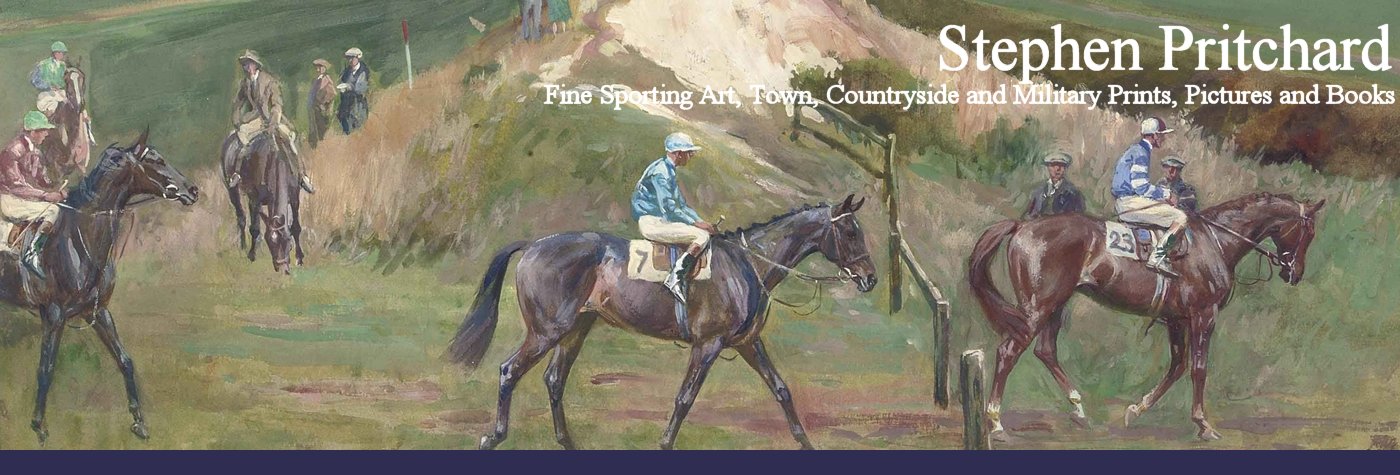James Lynwood Palmer prints and pictures available. If you can’t see the Lynwood Palmer Hunting Racing Polo or Horse painting that you’re looking for then please contact us on 07889 800857.
James Lynwood Palmer (1868-1941) was an English painter who specialised in painting race-horses and Hunting portraits, his characteristic style showing them as nervous and highly-strung, often with a background of a dramatic landscape. Read More
Widely considered to have been the best horse painter of his generation, he accepted commissions exclusively from private patrons, among whom were most notably William Cavendish-Bentinck, 6th Duke of Portland (1857-1943) (notably The Duke of Portland’s stallions at Welbeck Stud (1900), Daisy Greville, Countess of Warwick (1861-1938) and King George V (1865-1936). He rarely exhibited his work to the public.
He was born in 1868 at Market Rasen in Lincolnshire, the third son of Rev. G. Linwood Palmer, who in 1863 was a member of the Lincoln Diocesan Architectural Society and was a canon of Rochester Cathedral in Kent.
He was educated at King’s College, and was destined for a career in Law or in the Foreign Office. However at the age of 17, to escape his pre-planned future, he emigrated to Canada where he worked with horses on cattle ranches, as a hansom cab master and show jumper, and developed his skill in sketching horses. According to Lyllyan Baldwin (1933): “The first public success in his artistic career was perhaps that which came through the illustrations of an American catalogue of a sale of horses. The drawings received great praise and resulted in a number of commissions”. This was perhaps in connection with a certain “General Field of the US Army”, who is said to have been pivotal in helping to establish his career as a painter: According to Laffaye: “He took a batch of horses to New York; Gen. Field of the US Army saw his sketches and started him on his artistic career”. He remained in North America for 11 years and found there several patrons who admired his style of painting and purchased his works, including Marshall Field I (1834-1906), the American entrepreneur and founder of Marshall Field and Company, the Chicago-based department stores. In 1891 having established his reputation, he decided to return to England and settled at the White House in Heston, Middlesex. He was a judge at the International Horse Show at Olympia.
He had a passion for carriage driving and was frequently seen driving his “beautifully maintained” coach and four. During World War I, being too old for active service, he offered his skills for the service of the nation by managing a 750 horse stud for the Royal Mail.
In 1927 he explained his work as follows:
- “The secret of painting race-horses lies in quickness. Their movements are so alert, they are so full of nervous energy, that the artist has to have a hand like a streak of lightning to catch the pose while it lasts”.
James Lynwood Palmer success as an artist was largely derived through his ability to infuse into his expert draugtsmanship his thorough and first-hand understanding of the characteristics of the animals he was painting.
He was “always elegantly dressed, and with impeccable manners, he was hugely popular, especially, it was rumoured, with the wives of some of his patrons”. He received a serious injury when kicked by one of his equine subjects close to the heart, which affected him considerably in his later years. James Lynwood Palmer does not appear to have married, and in his will left personal possessions including his riding crop and glasses to his housekeeper Mary Cox, which items were sold at auction by Sotheby’s on 1 November 2006.
Source Wikipedia
